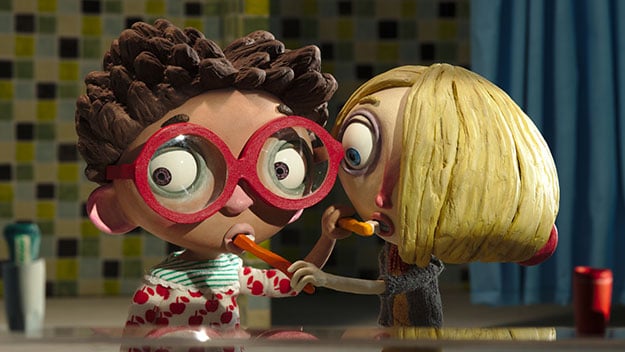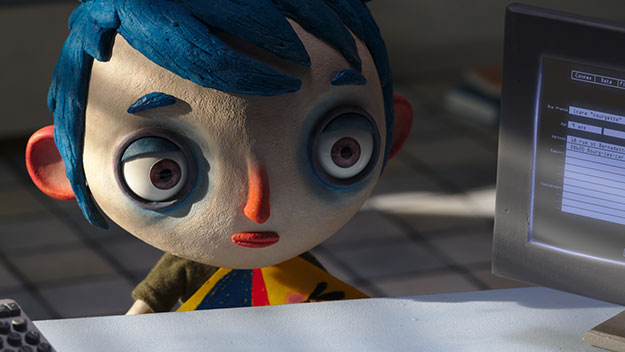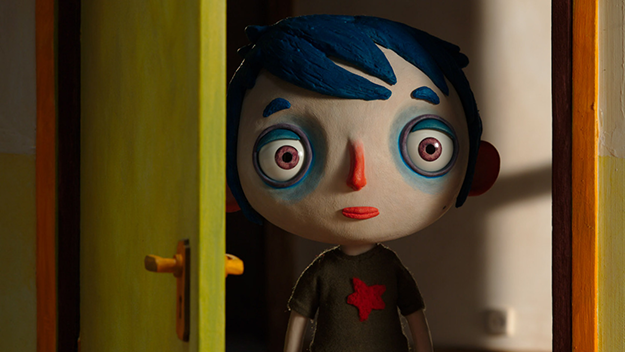How did you come to collaborate with Céline Sciamma? You have similar sensibilities in many ways—an appreciation of youth, both the pretty sides and the not-so-pretty sides, but without being pessimistic about it. It all started with a book that I found and read thanks to my longtime collaborator Cédric Louis. Together we’ve done short films before, one of which, Banquise [05], was presented here in Cannes 10 years ago. He’s a screenwriter so he started thinking about the adaptation of this book, which took seven years between different shorts we were making. But when it was time to start developing the film and shooting, it was 2009 and Cédric decided his allegiances were shifting toward documentary. So I wanted to continue the project but I needed a screenwriter because I’m not one, and it was my producer who suggested Céline Sciamma, knowing her personally, and that’s when she came on board three years ago. What was your original idea for the look of the film, and did it change over the course of production? The original concept is something I developed with Cédric over the course of time. For so many years, we made short films together. With the big head and the big eyes, our intention was to make it easier to get into the emotions and feelings of those characters, and it gives more pleasure to the animators to work with that kind of size in a way, instead of having to work on miniature things with miniature tools. It brings about beautiful things. I also wanted the style to have a roughness somehow, not to be too polished. This is the visual look I like the most. I’m very happy with the result. But I think for my future project I want to step back from realism in way, because it’s almost too good and I like imperfections. Each of the frames is elegantly composed. There isn’t too much stuff, but it’s not too spare. And you pay notably careful attention to the color: every other shot I was admiring the colors—the orange and yellow in the school bus, or the way you do the light on the windowpane flat like a Manet. I’m happy that you noticed this kind of detail, because my background is as an illustrator. But unfortunately on this project I didn’t have the time to deal with coloring, and to work on the colors, so I entrusted the task to my own partner, who is my partner in life as well, and I was very happy with her work. I think it’s beautiful in the way it manages to provide even the smallest details in the image. I think that resonates with the writing of Céline Sciamma’s script. It’s very clean, very neat, but with a great deal of attention to the smallest detail, and that’s what gives realism to the scenes.
I like that you both maintain the child’s perspective in a way that makes sense. For example, there’s a line in the film when someone says, “Let me open the letters. I’m good at opening letters.” For a child, that’s still a skill. What do you imagine in your head when you are thinking of the voice of a child? Are you thinking about yourself as a child? Yes, indeed. The reference was childhood and not only mine but Celine’s in the way that she wrote the dialogue. The whole work of casting the children and directing them was done by someone else, Marie-Eve Hildbrand. We actually recorded the voices as if we were doing a proper shoot. They were all together, and in continuity [in order] to have that level of involvement and the richness of the colors of the voices as well. I was listening with headphones with my eyes were closed, just to have a feeling of the rhythm and pace of the voices, and I would make comments, or ask to change a few things. But it was done as if on a real set. How long was the shoot? This was the very first stop-motion feature made in France. Therefore, we didn’t have any reference or any infrastructure able to do this. So we had to look to the U.K. or the U.S. to find someone able to program every single detail. Considering we were working on 15 different sets at the same time with 10 animators and 72 puppets that changed costumes all the time, it was a very complex machine to run. It was crazy work, the way we did it with no reference. The whole direction of this was given to François Langot who worked on television series, so he’s used to working on multiple sets. The problem with this kind of planning is you can’t really have it too strict and detailed, because it can shift every day if a setup takes longer than you expect. You risk losing entire days of work if you are too rigid. You have to adapt every single day. If there was no stop-motion in France before, what were your inspirations or models, or what are your favorite stop-motion films? The Nightmare Before Christmas for the faces. The documentary influence is the way it’s mixed with animation and live people interviews, and the Dardenne Brothers and Ken Loach for the social realism aspect.
There are movies like your film that are social realism dramas. This covers the same material, but without the feeling of sympathy shading into pity. It’s compassionate and humorous, so it’s refreshing. Is this a consistent interest for you to have a socially conscious animated drama? Yes, I’ve always been interested in realistic stories considering that, I think, children have a tough time nowadays in that we all behave in a schizophrenic way. We are giving them values but then our behavior contradicts the values we’re giving them. I really would like to offer them films that can help them come to terms with that. So you see this definitely as a movie for children and adults of all ages. Kind of like Dardenne for les enfants. “L’Enfant” pour les enfants. Another interesting thing about the movie is the idea of community in the film. The orphanage is not a great place, but you have community, and so succeeding in leaving that community is bittersweet. Yes, I think that’s the part that touches grown-ups more than children, because we realize it’s also a film about the end of childhood and the beginning of adolescence and what you need to leave behind if you want to grow up, and that’s what adults see in the film towards the end of it. That’s what really moves them because we all remember that.


